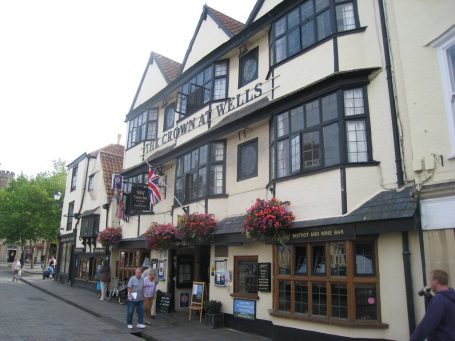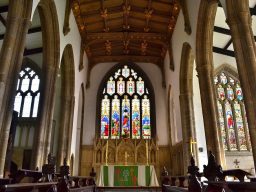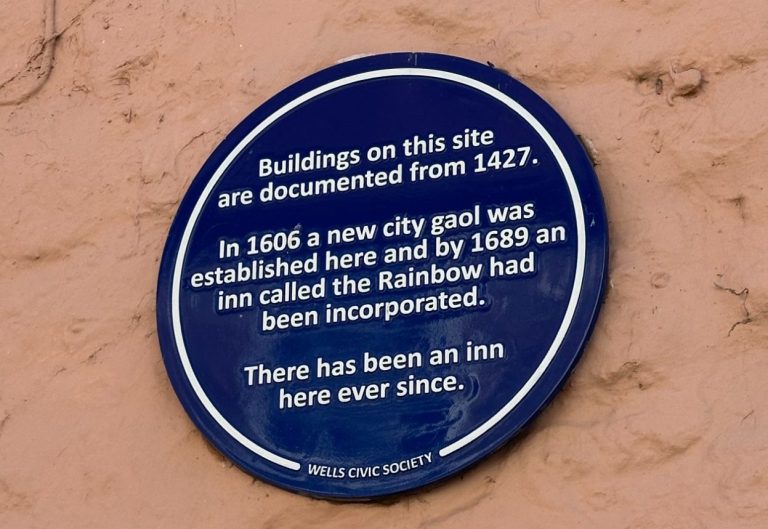Other Sights
to Visit
Wells and Mendip Museum
Information by. Wells & Mendip Museum | Wells | Somerset (wellsmuseum.org.uk)
Discover a fascinating variety of displays and galleries.
The museum brings to life the natural history and heritage of Wells and the Mendip region.

Wells Market Place
At one end of Wells Market place is Wells Market Cross and Fountain and at the other end is the Bishop's Palace and Gardens and twice a week the area buzzes with the sound of a market selling local farmers' produce and other items. There is quite a bit of history associated with the area. In 1685, in the Market Hall, 94 people were sentenced to death by Judge Jeffreys for taking part in the Monmouth Rebellion. In the same year, from a window of The Crown Inn, a William Penn addressed a crowd of about 300 people. In 1684 William Penn had been given some land in North America by King Charles II. That land was to become the colony of Pennsylvania, a refuge for religious refugees.
The Crown Inn.

Little is known of the history of The Crown from Penn’s time until to 1900 when Tom Price (pictured above) became licensee of The Royal Oak at just 20 years of age. He left a couple of years later but returned to take over the running of The Crown in 1912, where he stayed for forty two years.
During the First World War troops were billeted at The Crown, taking over the front half of the building. For more details of The Crown’s role during WWI please visit Wells Remembers.
Shortly after the war, Tom’s first wife and son died as a result of the ‘flu epidemic that swept the country at that time.
Tom later married May Bailey in 1922 and all four of their children, twin boys and two girls, were born and grew-up at The Crown.

In January 1993 The Crown was boarded up and in receivership. Adrian Lawrence (licensee at The Fountain Inn 1981 to 2013) thought this a great shame. The Crown was purchased from the receiver and Adrian set about trying to improve its fortunes. Adrian and his wife Sarah have owned and run The Crown ever since with the help of an excellent management team and staff.
More recently, in 2006, The Crown became the exterior of the pub in Hot Fuzz, directed by local boy, Edgar Wright, starring Simon Pegg and Nick Frost. In 2007, the trio returned to The Crown to enjoy dinner in Anton’s Bistrot, during the special ‘Wells premiere’ evening organised by our local cinema owner, Derek Cooper.
The Crown has been an important focal point in Wells throughout the 550 years it has stood and remains popular with locals and visitors.
Located in the very heart of Wells, the 15th century Crown is within easy walking distance of the Cathedral and Bishop’s Palace.
The Crown is believed to have been built around 1450, originally as houses, commissioned by the then Bishop Beckynton. Later on The Penn Bar was divided into two buildings providing a bar for The Crown coaching inn and a separate inn called The Royal Oak.
In 1695 from an upper window at The Crown, William Penn, a Quaker who later gave his name to Pennsylvania USA and our bar, preached to a crowd of around 2-3,000 below in the Market Place.
William Penn’s speech was interrupted by a local constable with a warrant from the Mayor to arrest him for unlawful assembly. It took weeks for the matter to be settled but William Penn later returned to The Crown and public speaking.

In the 1930’s The Crown was converted into a nine-bedroom hotel, the rooms having previously been used as long term lets. During market days The Crown also stabled between 60 to 70 horses for traders to use at the rear of the building.
During the Second World War, The Crown again was a temporary home to troops coming back from various conflicts, including the Dunkirk landings. After some rest and recuperation, they were kitted out and sent off to fight again.
Tom Price retired in 1954 as Wells’ longest serving landlord and a very popular figure in Wells. Wells is grateful to his family for providing this information.

St Cuthbert's Church
Information from - St Cuthbert's Church, Wells - Wikipedia
Worth a visit for two reasons 1. it is a beautiful building and the ceiling is worth a look and 2. It is one of the main locations in "Hot Fuzz".
The dedication of the church to St Cuthbert suggests Saxon origins. Originally an Early English building (13th century), from which the arcade pillars survive, it was much altered in the Perpendicular Period (15th century), when the clerestory and angel roof were added to the seven-bay aisled nave.
The nave's coloured ceiling was repainted in 1963 at the instigation of the then Vicar's wife, Mrs Barnett. During the restoration works in the 1960s a 15th-century carved and panelled ceiling was found above the side chapel which had been covered with plaster during the 18th or 19th century.
In 1975 a lightning strike caused one of the tower pinnacles to fall through the roof of the nave and damage the nave floor. The replacement pinnacle remained much paler than the other three for some years. Somewhat ironically, it is a fallen pinnacle from this tower that kills the local reporter, Tim Messenger, in "Hot Fuzz".


The Swan Hotel
The Swan Hotel is 15th-century coaching inn located in Sadler Street in the centre of the city of Wells , opposite the famous Wells Cathedral.
The "Blue plaque" depicts its varied and long history.


The City Arms
This photograph of the plaque on the wall, depicts the building's previous use as a Jail.
This is where we have our Saturday Dinner together.

We need your consent to load the translations
We use a third-party service to translate the website content that may collect data about your activity. Please review the details in the privacy policy and accept the service to view the translations.








